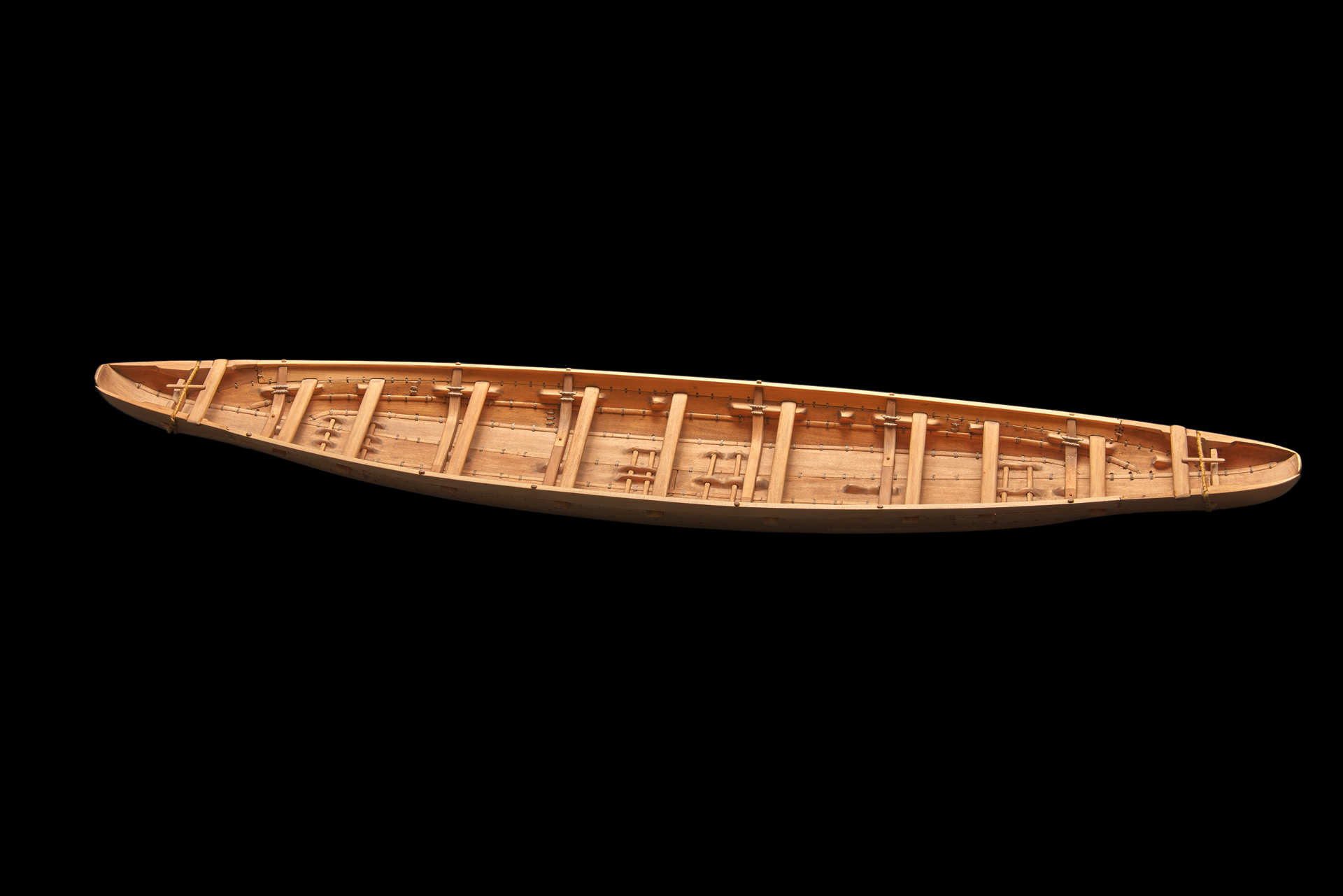The Ferriby Boats
The Ferriby Boats are Bronze Age, plank-built boats discovered at North Ferriby in East Riding, Yorkshire. Built from wood, willow and moss they're about 16 m in length and were used to import and export goods. Only a handful of similar boats exist in Britain, so we're lucky to have three in our collection.

About the Ferriby Boats
As well as being part of our local history, the Ferriby Boats are nationally important. In fact, they're considered to be Europe's oldest seacraft!
Built in the Bronze Age, sailors used them to distribute sought-after commodities. Commodities like Whitby Jet, which was often part of high-status burial assemblages in Northern Britain.
The Bronze Age sailors of North Ferriby could fetch as well as carry. With these boats, they brought new ideas and goods to the Humber shore, from decorative pottery design to Baltic amber and metals.
How were the boats made?
The Ferriby Boats were part of a boatyard on the foreshore of the Humber. Described as "plank-built vessels", they were almost 16 m in length with a maximum beam of around 2.5 m. The boats had curved lines with box scarfing of planks to form a keel strake. The planks were then fitted together, which was a sophisticated boat-building tradition. Builders would stitch planks with thick withy – a strong, flexible willow stem now used in thatching and gardening. They would then caulk the gaps with moss to seal the seams and make the boats watertight. Cleated stays and ribs helped keep the boat rigid.
So you see, the people of North Ferriby were skilled boat-building technicians, as well as sailors and pioneers!
The discovery
In 1930, the deep water channel in the Humber River shifted from the south to the north side. This sudden change scoured away recent silting on the northern bank. As a result, ancient layers of peat and silt became exposed, especially at Melton and North Ferriby in East Yorkshire. Two local teenagers, Christopher and Edward (Ted) Wright, followed this development with interest. Together they kept watch on this area of the Humber foreshore for a decade.
In 1937, Ted Wright discovered the first boat revealed by erosion at North Ferriby, near Hull. His find was of great importance since the boat builders had not used any metal parts in their construction. This discovery went on to advance the archaeological study of early seafaring.
In 1940, Ted Wright discovered the keel plank of a second boat. And in 1946, the remaining parts of boats one and two were excavated and recorded. The two boats were similar in design, with boat two showing tool marks from Bronze Age axes. In 1963, a third boat of a similar build was discovered, though this one appeared to be an earlier example.
Excavation and preservation
In 1946, C. W. Philips, one of the excavators of the Sutton Hoo ship, came to help excavate the boats. Together with local businessmen and individuals, they dug out the first two boats. These were then transported to the National Maritime Museum in Greenwich, London. At the same time, a detailed recording of some measurements took place. This was useful since some pieces didn't survive 1940s conservation techniques.
Ferriby Boat three was recovered by Priestman Brothers Limited, with the help of Hull Museums and East Riding Archaeological Society. The boat was cradled in steel and dragged from the Humber. Once recovered, it was transported to a water-filled holding tank at Hull Museum, Albion Street.
Thanks to the anaerobic waterlogged conditions of the burial, the boats are in an excellent state of preservation. You can see this in the survival of the moss caulking and yew withy ties that hold the planks together. Anaerobic conditions mean "without air". In such conditions, there isn't enough oxygen for bacteria and fungal growth, so the normal rotting process doesn’t take place.
Europe's Oldest Seacraft and the Nuclear Age
At the time Ted Wright discovered the first Ferriby Boat, there was no way to date it. However, in 1951, scientists developed the method of radiocarbon dating. This method is used to date samples that were once alive, for example, bone, charcoal, wood and leather. Each of these contains carbon, a proportion of which is radioactive – hence "radiocarbon". This is also known as Carbon-14 or C-14. Radiocarbon dies and decays at a constant rate, which can be estimated and used to date the sample.
Some of the Ferriby boats weren't suitable for C-14 dating, but other pieces could be sampled. Some wood and twine yielded a date in the Later Bronze Age 750, plus or minus 150 BC. Further C-14 dating followed, through the more refined method we use today. We now date Ferriby Boat one to 1880–1680 BC, and Ferriby Boat two to 1940–1720 BC. Ferriby Boat three is dated to 2030–1780 BC.
In March 2001, the Ferriby Boats were declared Europe's earliest seacraft.

